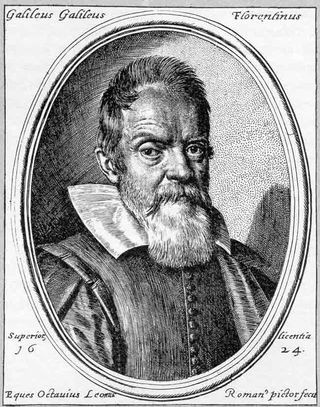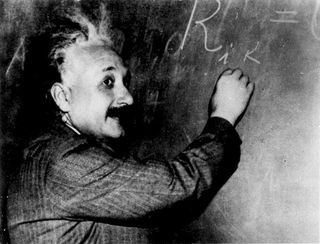Are you curious about how far light travels in one second and how that relates to exploring Vietnam? The speed of light is a fundamental constant, and at SIXT.VN, we help you understand this concept while planning your amazing trip to Vietnam. Get ready to explore cultural sites, enjoy stunning scenery, and experience unique adventures. Let’s learn about the speed of light and how SIXT.VN can make your travel dreams a reality. Enjoy the journey!
1. What is the Speed of Light?
The speed of light is the distance light travels in a vacuum in one second. It’s approximately 299,792,458 meters per second (983,571,056 feet per second), or about 186,282 miles per second. This is a universal constant, often denoted as “c” in scientific equations. According to Albert Einstein’s theory of special relativity, nothing in the universe can travel faster than light. As matter approaches the speed of light, its mass becomes infinite, making light speed a cosmic speed limit.
 Abstract, futuristic image of blue light streaks radiating outward, giving the impression of rapid movement or traveling at high speed, inspired by the concept of faster-than-light travel
Abstract, futuristic image of blue light streaks radiating outward, giving the impression of rapid movement or traveling at high speed, inspired by the concept of faster-than-light travel
2. Why is the Speed of Light Important?
The speed of light is crucial in physics and astronomy. According to the U.S. National Institute of Standards and Technology, it defines standard measurements like the meter. It also helps define the kilogram and the temperature unit Kelvin. The speed of light allows astronomers to look back in time, as light from distant objects shows them as they were when the light left those objects.
3. What is a Light-Year and How Does It Relate to Distance?
A light-year is the distance light travels in one year, approximately 6 trillion miles (10 trillion kilometers). It’s used to measure vast cosmic distances. For example, light from the Moon reaches our eyes in about 1 second, so the Moon is about 1 light-second away. Sunlight takes about 8 minutes to reach us, making the Sun about 8 light-minutes away. The nearest star system, Alpha Centauri, is 4.3 light-years away.
According to NASA’s Glenn Research Center, a light-year is immense. Imagine laying the Earth’s circumference (24,900 miles) in a straight line, multiplying that by 7.5 (one light-second), and then placing 31.6 million similar lines end to end. That’s almost 6 trillion miles!
4. How Long Would It Take Humans to Travel One Light Year?
Traveling one light-year is incredibly time-consuming. An airplane traveling at 600 mph (965 km/h) would take 1 million years. Even a crewed spacecraft like the Apollo lunar module would take approximately 27,000 years, according to BBC Sky at Night Magazine. Stars and other celestial objects are located from a few to billions of light-years away.
5. What is Faster Than the Speed of Light?
According to Dr. Rob Zellem, a staff scientist at NASA’s Jet Propulsion Laboratory, nothing travels faster than light within the universe. Light is a “universal speed limit,” moving at 300,000 kilometers per second (186,000 miles per second), as dictated by Einstein’s theory of relativity.
6. Is the Speed of Light Constant?
The speed of light is constant in a vacuum, such as space. However, it can slow down when passing through a medium like water (225,000 kilometers per second) or glass (200,000 kilometers per second).
7. Who Discovered the Speed of Light?
One of the first measurements of the speed of light was made by Ole Rømer in 1676, observing the moons of Jupiter. High-precision measurements were first achieved in 1879 by the Michelson-Morley Experiment.
8. How Was the Speed of Light First Measured?
Ole Rømer measured the speed of light by observing eclipses of Jupiter’s moon Io. He noticed that eclipses occurred slightly earlier when Jupiter was closer to Earth and later when it was farther away. Rømer attributed this difference to the time it took for light to travel the varying distances.
9. How Did Scientists Learn About the Speed of Light Over Time?
From ancient Greek philosophers to modern physicists, understanding the speed of light has been a long journey.
 Galileo Galilei is credited with discovering the first four moons of Jupiter.
Galileo Galilei is credited with discovering the first four moons of Jupiter.
- Early Philosophers: As early as the 5th century BC, Greek philosophers like Empedocles and Aristotle debated the speed of light. Empedocles believed light had a travel rate, while Aristotle thought it was instantaneous.
- Galileo Galilei: In the mid-1600s, Galileo attempted to measure the speed of light using lanterns on hills, but the distance was too short to record it accurately. He only concluded that light traveled at least 10 times faster than sound.
- Ole Rømer: In the 1670s, Danish astronomer Ole Rømer, while creating a timetable for sailors, observed the eclipses of Jupiter’s moon Io. He noticed discrepancies in the timing based on the Earth’s distance from Jupiter, leading him to estimate the speed of light.
- James Bradley: In 1728, English physicist James Bradley based his calculations on the change in the apparent position of stars due to Earth’s orbit, estimating the speed of light with about 1% accuracy.
- Hippolyte Fizeau and Leon Foucault: In the mid-1800s, these French physicists used terrestrial experiments involving rotating toothed wheels and mirrors to calculate the speed of light, achieving results within about 1,000 miles per second of the actual value.
- Albert A. Michelson: In 1879, Michelson refined Foucault’s method, increasing the distance between mirrors and using high-quality equipment. His measurement was the most accurate for 40 years. He later built a mile-long vacuum tube to further refine the measurement.
10. How Does Einstein’s Theory of Special Relativity Relate to the Speed of Light?
Einstein’s theory of special relativity, represented by the equation E = mc^2, unifies energy, matter, and the speed of light.
 Albert Einstein writing on a blackboard.
Albert Einstein writing on a blackboard.
The equation shows how small amounts of mass contain immense energy. The speed of light serves as a conversion factor, showing how much energy is within matter. Einstein stated that light moves through a vacuum at a constant speed, regardless of the observer’s speed. Objects with mass cannot reach the speed of light because their mass would become infinite, requiring infinite energy to move them.
11. Does the Universe Expand Faster Than the Speed of Light?
Yes, the universe expands faster than the speed of light. Astrophysicist Paul Sutter noted that the universe expands at a rate of a little more than 42 miles (68 kilometers) per second for each megaparsec of distance from the observer. At extreme distances, this expansion exceeds the speed of light.
12. Does Light Ever Slow Down?
While light travels at an absolute speed in a vacuum, it can be slowed down when traveling through materials. The refractive index of a material determines how much it slows down light. For example, light slows down slightly in Earth’s atmosphere and significantly in diamond. Researchers have even trapped and stopped light inside ultra-cold clouds of atoms and through “exceptional points” where light emissions intersect.
13. Can We Travel Faster Than Light?
Science fiction often explores faster-than-light travel, but it remains theoretical. One idea involves warping space-time around a spaceship to move the space instead of the ship itself. Without faster-than-light travel, interstellar travel would take thousands of years, highlighting the need for future physicists to explore these possibilities.
14. How Can Understanding the Speed of Light Enhance My Travel Experience with SIXT.VN?
Understanding the vastness of space and the concept of light-years can bring a unique perspective to your travels in Vietnam. As you explore the diverse landscapes and cultural sites, remember that even the light from the sun takes time to reach you, connecting you to the universe in a tangible way. SIXT.VN offers services that help you make the most of your time, allowing you to experience as much as possible during your stay.
15. How Does SIXT.VN Help Travelers Overcome Common Challenges in Vietnam?
Traveling in a new country can be challenging. Here’s how SIXT.VN addresses common concerns:
- Planning Difficulties: SIXT.VN offers expert travel consultation to create tailored itineraries that match your preferences and schedule.
- Language and Cultural Barriers: Our services provide support to navigate language and cultural nuances, ensuring a smooth and enriching experience.
- Reliable Services: We connect you with trusted and high-quality travel services, ensuring your safety and comfort.
- Transportation and Navigation: SIXT.VN provides airport transfers and assistance with local transportation, making it easy to explore Hanoi and beyond.
- Booking Assistance: We offer quick and convenient booking for hotels, flights, and tours, saving you time and effort.
16. What Services Does SIXT.VN Offer to Make My Trip Easier?
SIXT.VN offers a range of services tailored to your travel needs:
- Customized Itineraries: Tailored to your interests and time frame.
- Airport Transfers: Safe and reliable transportation from the airport.
- Hotel Booking: Options for every budget and location preference.
- Tour Bookings: Access to popular attractions in Hanoi and surrounding areas.
- Flight Booking: Competitive prices and convenient schedules.
- Hanoi Tours: Professional and engaging tours of Hanoi’s highlights.
17. How Can SIXT.VN Help Me Plan a Trip to Experience Vietnamese Culture and Scenery?
SIXT.VN can help you plan a trip that combines cultural experiences and scenic beauty. We offer tours to historical sites, cultural events, and natural wonders. Whether you want to explore ancient temples, bustling markets, or serene landscapes, we can create an itinerary that meets your interests.
18. What Are the Benefits of Using SIXT.VN for My Vietnam Trip?
Using SIXT.VN for your trip to Vietnam offers several advantages:
- Convenience: All your travel needs in one place.
- Speed: Quick and efficient booking and support.
- Reliability: Trusted services for a worry-free trip.
- Support: Dedicated assistance throughout your journey.
19. How Can I Book Services with SIXT.VN?
Booking with SIXT.VN is easy. Visit our website or contact us directly via phone or WhatsApp. Our team will assist you in planning and booking the perfect travel services for your Vietnam adventure.
- Address: 260 Cau Giay, Hanoi, Vietnam
- Hotline/Whatsapp: +84 986 244 358
- Website: SIXT.VN
20. What Unique Experiences Can I Expect with SIXT.VN in Hanoi?
With SIXT.VN, you can expect unique and immersive experiences in Hanoi:
- Authentic Cultural Tours: Explore Hanoi’s Old Quarter and historical landmarks.
- Culinary Adventures: Discover the best local eateries and traditional Vietnamese cuisine.
- Scenic Day Trips: Visit stunning landscapes and cultural sites outside Hanoi.
- Personalized Service: Enjoy tailored experiences that cater to your specific interests.
21. How Does SIXT.VN Ensure a Safe and Enjoyable Trip for Tourists?
SIXT.VN prioritizes your safety and enjoyment by partnering with reputable service providers, offering reliable transportation, and providing comprehensive support throughout your trip. We also provide up-to-date information on local regulations and safety guidelines.
22. Can SIXT.VN Help with Visa and Entry Requirements for Vietnam?
Yes, SIXT.VN provides guidance and assistance with visa and entry requirements for Vietnam. We can help you understand the necessary documents and procedures to ensure a smooth entry into the country.
23. What Types of Accommodation Options Does SIXT.VN Offer in Hanoi?
SIXT.VN offers a wide range of accommodation options in Hanoi, from budget-friendly hostels to luxury hotels. We cater to different preferences and budgets, ensuring you find the perfect place to stay.
24. How Can SIXT.VN Assist with Transportation Within Hanoi?
SIXT.VN provides various transportation options within Hanoi, including private car services, airport transfers, and assistance with local transportation. We ensure you can easily navigate the city and reach your destinations comfortably.
25. Does SIXT.VN Offer Group Tour Packages?
Yes, SIXT.VN offers group tour packages designed for families, friends, and colleagues. Our group tours provide a convenient and enjoyable way to explore Vietnam together, with itineraries tailored to your group’s interests.
26. How Can I Stay Updated on the Latest Travel Deals and Offers from SIXT.VN?
Stay updated on the latest travel deals and offers from SIXT.VN by subscribing to our newsletter and following us on social media. We regularly announce special promotions and discounts to help you save on your next trip.
27. What Are Some Popular Destinations Near Hanoi That SIXT.VN Can Help Me Visit?
SIXT.VN can help you visit popular destinations near Hanoi, such as:
- Ha Long Bay: A stunning UNESCO World Heritage site with breathtaking limestone karsts.
- Sapa: A mountainous region with beautiful rice terraces and ethnic minority villages.
- Ninh Binh: Known for its scenic landscapes, including Tam Coc and Trang An.
28. How Does SIXT.VN Support Sustainable and Responsible Tourism?
SIXT.VN is committed to sustainable and responsible tourism by promoting eco-friendly practices and supporting local communities. We encourage travelers to respect the environment and culture, ensuring a positive impact on the destinations they visit.
29. What Cultural Experiences Does SIXT.VN Recommend in Hanoi?
SIXT.VN recommends several cultural experiences in Hanoi, including:
- Visiting the Temple of Literature: Vietnam’s first university.
- Exploring the Old Quarter: A bustling area with traditional shops and street food.
- Attending a Water Puppet Show: A unique Vietnamese art form.
- Visiting Hoan Kiem Lake: A scenic lake with Ngoc Son Temple.
30. How Can SIXT.VN Help Me Find the Best Local Cuisine in Hanoi?
SIXT.VN can guide you to the best local cuisine in Hanoi, from street food stalls to traditional restaurants. We provide recommendations and food tours that allow you to savor authentic Vietnamese dishes like Pho, Bun Cha, and Banh Mi.
Understanding the vastness of the universe might seem unrelated to planning a trip, but it enriches your perspective. Similarly, SIXT.VN enriches your travel experience by providing comprehensive, reliable, and personalized services. From airport transfers to customized itineraries, we handle the details so you can focus on enjoying the journey. Ready to explore Vietnam? Contact SIXT.VN today and let us help you create an unforgettable adventure! Our travel experts are ready to assist you.
Call to Action:
Don’t let travel challenges hold you back. Contact SIXT.VN today for expert travel consultation, reliable services, and unforgettable experiences in Vietnam. Visit SIXT.VN or call +84 986 244 358 to start planning your dream trip!
Frequently Asked Questions (FAQ) about the Speed of Light
1. How Far Does Light Travel In 1 Second in miles?
Light travels approximately 186,282 miles in one second.
2. What is the scientific notation for the speed of light?
The speed of light is approximately 3.0 x 10^8 meters per second.
3. How does the speed of light affect space travel?
The speed of light is the ultimate speed limit in the universe, making interstellar travel incredibly time-consuming.
4. Can humans travel at the speed of light?
No, according to Einstein’s theory of special relativity, objects with mass cannot reach the speed of light.
5. Does light travel at the same speed in all mediums?
No, light travels fastest in a vacuum and slows down when passing through other mediums like water or glass.
6. What is a light-year, and why is it used?
A light-year is the distance light travels in one year, used to measure vast cosmic distances.
7. Who first accurately measured the speed of light?
Albert A. Michelson made one of the first highly accurate measurements of the speed of light.
8. What is the relationship between the speed of light and time?
According to special relativity, time slows down for objects moving at speeds approaching the speed of light.
9. Is it possible to travel faster than light?
While theoretically possible by warping space-time, current physics suggests nothing can travel faster than light within the universe.
10. How does the speed of light affect our understanding of the universe?
The speed of light allows us to see distant objects as they were in the past, providing insights into the universe’s history and evolution.



